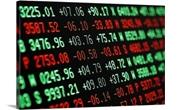Prices

August 11, 2022
Hot Rolled Futures: Onward and Possibly Upward
SMU contributor Bryan Tice is a partner at Metal Edge Partners, a firm engaged in Risk Management and Strategic Advisory. He and the firm design and execute risk management strategies for clients. They also provide process and analytical support. Before joining Metal Edge Partners, Bryan held commercial leadership roles involving purchasing, sales, and risk management for Feralloy Corp.,Cargill Steel Service Centers, and Plateplus Inc.
You can learn more about Metal Edge at www.metaledgepartners.com. Bryan can be reached at Bryan@metaledgepartners.com for comments or questions.
It seems as if this year’s Steel Summit event will once again be well timed given dynamics unfolding in the steel market. After 16 weeks of declining sheet prices equating to a 60% drop that wiped out the meteoric 50% rise that occurred over a 7-week heater when the Ukraine war began, we have seen our first sheet increase in months.
Understandably there is some skepticism given the latest erosion in scrap prices. But given how far prices have fallen, others think we have begun to challenge mill costs – which have also risen along with most everything these days. On top of that, the clock is ticking on approximately 72,000 tons per day of supply from union-organized steel mills whose labor contracts have already either been extended or will expire by midnight on September 1.
Speaking of supply, earlier this week the American Iron and Steel Institute (AIS) released first half of 2022 steel shipments. That data showed that US steel mills shipped the same amount of steel in the first six months of this year as they did during the first half of 2021. We all remember how tight steel was and how good demand (specifically in automotive/appliance) was in the first half of 2021. The result: steel prices soared.
For reference, steel mills shipped 3% more volume in the second half of 2021 than the first half, helping to bring the market more into equilibrium. Fast forward to the first half of 2022, when things felt much different as lead times were shorter, prices were falling (sans Ukraine war reaction), and demand felt a bit softer. Yet steel mills matched last year’s first half shipment pace. Additionally, when looking at mill capacity utilization and focusing on the raw steel production (blue line), the above shipment data makes sense in that tons produced are flat when comparing the two periods, albeit trending in opposite directions.

In contrast, when looking at the import landscape last year, it was the reverse image of the domestic backdrop referenced above, with 1H21 imports 3% higher vs the 2H21. Despite all the discussion on new capacity here in the US, the biggest difference is in imports as you compare the supply landscape of 1H21 to 1H22.
Steel imports across all categories into the US through the first half of 2022 are ~2 million tons higher in aggregate than they were last year January through June. Stripping out flat rolled specifically, it is ~1.25 million tons higher in 1H22 vs. the same period last year.
The below is a long-term graph of a basket of flat products imports into the US. It illustrates how much higher we have been recently relative to the long-term average (red horizontal line). Based on the most recent July license data, imports should be lower to the tune of about 235k tons as compared to June, with more than half of that drop coming from flat products.
Most in the market seem to think given the decline in US prices that imports may not be all that attractive, thus one could conclude we may see lower imports over the next 3-4 months – a time when we have mill maintenance projects that should limit domestic supply growth. It’s also a time when there is the potential of a more meaningful impact from labor disruption due to failed union contract negotiations.

Over in the futures market, it has been an eventful start to the week. The forward curve behaved predictably to Nucor’s price announcement as the third through fifth month future increased in line with the published price increase. What is interesting is the contango that has developed between the second and fifth month future. We started August with the September settlement at $854/ton and December trading at a $21/ton premium at $875/ton.
As of Wednesday’s close, that spread widened to an $80/ton premium, with December valued at $940/ton against September’s $860/ton settlement.
We did see those spreads narrow today before the settlements were published with the Q4-22 giving back ~$15-$20/t. Despite all this, the futures market is baking in a follow-on increase or some type of labor fireworks that may push prices higher between now and the end of the year.
As for 2023 futures, we continue to see an appetite for futures buying in the $920-$930/ton range at least in the first half of 2023.

While the ink has barely dried on the August scrap trade, many industry participants are expecting some upward movement on scrap for September. The BUS forward curve as shown below is also indicating some optimism that we have reached a bottom on scrap prices here in the US, and expectations are that we trend toward the $500 per gross ton level as we get into 2023.

With that we will close for the week and hope that we will see you in Atlanta in a few weeks!
Disclaimer: The information in this write-up does not constitute “investment service,” “investment advice,” or “financial product advice” as defined by laws and/or regulations in any jurisdiction. Neither does it constitute nor should be considered as any form of financial opinion or recommendation. The views expressed in the above article by Metal Edge Partners are subject to change based on market and other conditions. The information given above must be independently verified and Metal Edge Partners does not assume responsibility for the accuracy of the information.






